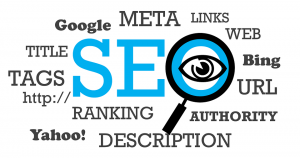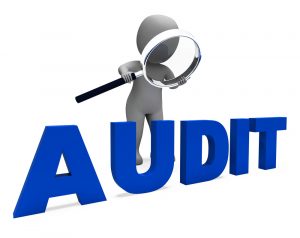What is Search Engine Optimisation?
Search Engine Optimisation (SEO) is one of the most effective ways in which fashion brands can make themselves known on the web. SEO is a marketing strategy which attempts to improve a company’s search engine rankings on sites such as Google, Bing and Yahoo.
Here’s a useful, yet quick video on what SEO is: https://youtu.be/-3xGkMKWjJQ
Why is it important for companies to use SEO?
Ethinos Marketing (2015) stated that websites on the first page of Google receive 95% of all traffic on their websites compared to those on page two and three of the Google search results. Therefore, SEO is a huge step in the right direction for companies is to see whether they are using SEO effectively. In order to achieve this, we will need to undertake an audit.
What is an Audit?
An audit is the broad assessment of all angles of a marketing operation in a company. Loya (2011) stated that an audit is an “orderly evaluation of plans, objectives, strategies, activities and organizational structure as well as marketing staff”. In this case, we will be specifically looking into how we can tell if fashion brands are making the most of the search engines and making themselves visible.
How do we conduct a SEO Audit?
There are various methods in which you can do a SEO audit. Some are very in-depth and time consuming and tend to be for the companies themselves, or there are some less complicated methods which we can take on which are still effective. We are going to look at a method based from Danny Dover’s Approach (2010), as it is useful and fairly straightforward to follow.
Here is a step by step starter guide as to how to do a SEO Audit
- Set up your Browser:
- Disable all of your current cookies: This will allow you to look at the website again as if it’s your first time.
- Changing user-agent: A user-agent is a software agent which allows you to look at the website from a specific search engines point of view. So to look at it from Google’s angle, you would need to change your web user-agent to googlebot.
- The Homepage:
This now requires you to use the main URL of the site under observation. You need to analyse the web-page as if you are a consumer looking at the site for the first time. While doing this, it is important to consider the following:
– Would you trust this page?
– How could search tags be broadened and improved?
– Does the URL changed when looking through the site?
– Is the URL displayed as safe and secure; e.g. Http:// vs. Https:/ – the s in the latter means the website is secure.
- Worldwide Navigation:
Next up, we can look at the worldwide navigation. To do this, we need to disable our JavaScript and refresh the page. Then we can navigate around the page and check that all the sites links are HTML. Afterwards we should then note down all the sections which are linked together and then re-enable JavaScript.
Worldwide navigation is important because it refers to the sites architecture, which has relevance to whether or not a website is considered friendly by a search engine.
- Category Pages:
All websites contain categories of content e.g. a clothing retailer’s website would have a section for men, women and children etc… Although variety is generally pleasing for the consumer, it is important not have too many links as they could end up as inefficient or irrelevant. In addition to this, all aspects of the website such as font and other small design choices have a consequence with regards to how the consumer perceives the website.
- Content Pages:
Moving on from categories, another key element of the website to take into consideration for the audit is the content pages. Title Tags, Meta Description and the URL need to be checked. These are important to have correct as it will give the website a better chance to get recognised in search engine results.
- Links:
Links are very important for a website as they can be put into search engine algorithms. It is imperative to examine the anchor text distribution of any inbound links, whilst also inspecting the total amount of links and root domains.
- Final Stage! Search Engine Inclusion:
Search engine inclusion refers to where and how your website is accessible. There are four steps you should do in order to test the level of search engine inclusion:
- Search for tags or key words that relate to your website
- Search for your domain
- Check how many of your pages are indexed
- Search for duplicates of your content pages
Search engine inclusion is important because it is one of the factors that dictate the frequency of visits a website may receive.
I hope this method has helped understand how to undertake a SEO audit for the fashion industry in order to determine their visibility on search engines!
Additional links to more useful methods are linked below:
https://searchengineland.com/5-minute-seo-audit-196513
https://moz.com/blog/how-to-perform-the-worlds-greatest-seo-audit
https://searchenginewatch.com/2016/09/12/seo-audit-a-complete-guide-to-the-basics/
References:
Denisa, L., Jaroslaw, D. (2013) Marketing Audit and Factors Influencing Its Use in Practice of Companies (From an Expert Point of View), Journal of Competitiveness, vol. 5, issue 4, pp. 26-42. DOI: 10.7441/joc.2013.04.02.
Dover, D. (2010) A Step by Step 15 Minute SEO Audit (A Sample from SEO Secrets), Moz.com, Available from: https://moz.com/blog/a-step-by-step-15-minute-seo-audit-a-sample-from-seo-secrets [Accessed 26/11/2017]
Ethinos Digital Marketing (2015) What is SEO? How Search Works? – Ethinos Digital Marketing, YouTube. Available from: https://youtu.be/-3xGkMKWjJQ [Accessed 25/11/2017]
Keller, K. L., Aperia, T., Georgson, M. (2008) Strategic Brand Management: A European Perspective. Essex, Pearson Education Limited.
Loiz, D. (2012) Simple SEO Audit Checklist for Beginners, Advanced Blog Web Ranking, Available from: https://www.advancedwebranking.com/blog/seo-audit-checklist/ [Accessed 26/11/2017]
Patterson, D. (2009) 3 Common URL Problems and How to Fix Them, SEO.com, Available from: https://www.seo.com/blog/seo-tips/3-common-url-problems-and-how-to-fix-them/ Accessed [26/11/2017]
Red Evolution (2017) What is SEO? It’s Simpler Than You Think!, Red Evolution. Available from: https://www.redevolution.com/what-is-seo [Accessed 25/11/2017]
Schmitz, T. (2014) How to Do Your Own 5-Minute SEO Audit, Search Engine Land, Available from: https://searchengineland.com/5-minute-seo-audit-196513 [Accessed 27/11/2017]
Stoyanov, N. (2016) SEO audit: a complete guide to the basics, Search Engine Watch, Available from: https://searchenginewatch.com/2016/09/12/seo-audit-a-complete-guide-to-the-basics/ [Accessed 27/11/2017]
Webb, S. (2012) How to Perform the World’s Greatest SEO Audit, Available from: https://moz.com/blog/how-to-perform-the-worlds-greatest-seo-audit [Accessed 27/11/2017]


